It’s safe to say that most college riders at one of the Intercollegiate Horse Show Association (IHSA) shows have met Bob Cacchione, and they have probably heard him tell the story of the IHSA’s conception that goes something like this: Bob was an 18-year-old sophomore at Fairleigh Dickinson University in New Jersey, and his parents told him they would no longer pay for his riding. So he negotiated free use of horses at a local stable in exchange for giving riding lessons, where he gathered what soon became a team. Next, when he held a show using donated horses, nearby colleges caught wind of the event. What started as a small group of riders has now grown into a huge network, including almost 400 colleges across the country, and over 8,300 riders in hunter-seat equitation, Western horsemanship, and reining. If Cacchione seems proud of his accomplishments, he is. But as anyone who knows the IHSA will tell you, he should be proud. “The IHSA is Bob. Without him none of this would be what it is,” says Peter Cashman, coach of the West Point team and Zone Chairman of the IHSA. “Bob’s work is hard, and it pays him nothing. He puts more time and energy into the IHSA than anyone else would or could.”

The growth of the IHSA program across the country is undeniable, but what can’t be measured is the level of respect it has gained. In a world where show winners are often those who can afford the finest horses, the IHSA levels the playing field. At these shows, students ride horses that are furnished by the host college and randomly chosen by a drawing. To further focus the competition on pure horsemanship, the use of personal tack is not allowed and practice schooling is not permitted. Bob is quick to point out that the IHSA enables low-level riders to compete in college shows along with some of the top riders of their generation. This not only widens the circle of equestrians, but is a driving factor in the growth of the overall horse industry, as many IHSA alumna went on to build companies and careers inspired by their love of horses.
A Trip to the Beach
Bob warned us that it might not be the best time to visit his home, but nonetheless he graciously offered us a tour. A few days later, EQ pulled up to his beachfront home in Connecticut, which recently had been battered by Hurricane Sandy. We stepped over and around fallen debris and piles of sand. Repairs were still in full operation. The entire porch, which had been swept away, was being rebuilt, and all of the landscaping was being quickly replaced. Bob welcomed us inside and counted off the different parts of his home that were destroyed or damaged. But talk of the hurricane quickly faded as we became enthralled with Bob’s charm, warmth, and enthusiasm, and we wandered from room to room, admiring walls of amazing memorabilia.

Many of the visuals represented Cacchione’s time at Cartier, where he spent most of his early career and created a division that went on to become the company’s most successful. The parties he organized, the celebrities he rubbed elbows with, and the jet-setting life style — all sounded surreal. An interesting story accompanied each framed picture. When we asked about a letter from Elizabeth Taylor, he recalled that he was instructed to deliver a custom Cartier bracelet to Taylor from her then husband, Senator John Warner. In true Bob Cacchione style, he brought along a single red rose and charmed her with some simple conversation, “Your birthday is today, mine is tomorrow!” A month later, he received a letter from Liz Taylor herself. Ralph Destino, Cartier’s CEO, also sent him a note: “I don’t understand this. I design the piece, the senator pays for it, and you get the thank you note,” Bob told us with a smile.
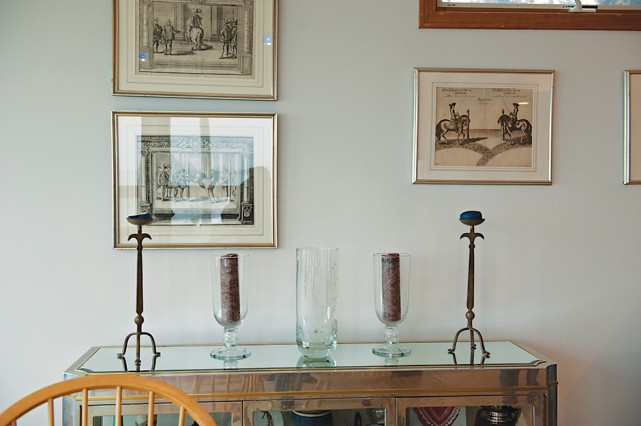

Cacchione made the interview easy. As each story occurred to him, he would suddenly jump from his seat and run to one of the closets or walls to take down a painting or handwritten letter. By the end of our conversation, the tables and counters were littered with framed memorabilia that told an eclectic and impressive tale.
Once, on a fox hunt, he pulled up to allow the other riders to pass, only to have someone crash their horse directly into him. That someone was Jackie Onassis. He ended up spending the afternoon with her. (She was a lovely woman, he assures us).
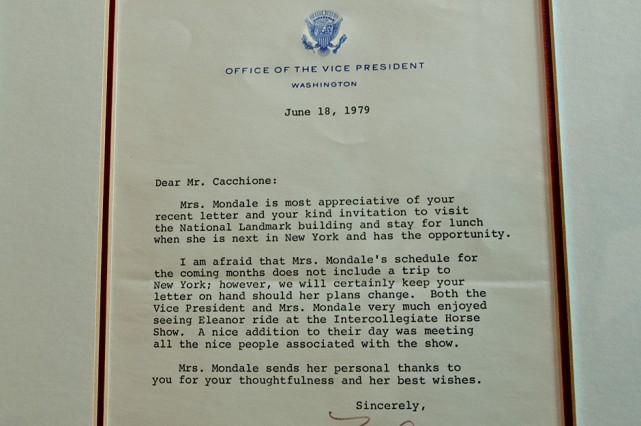
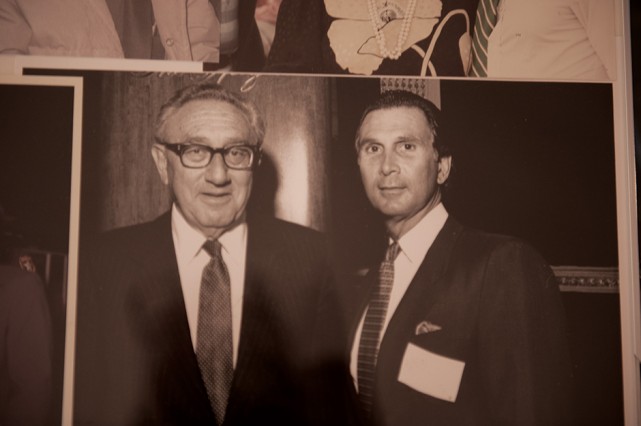
He shuffled through photos of parties with Bo Derek and Andy Warhol, meetings with Walter Mondale and even the Pope.
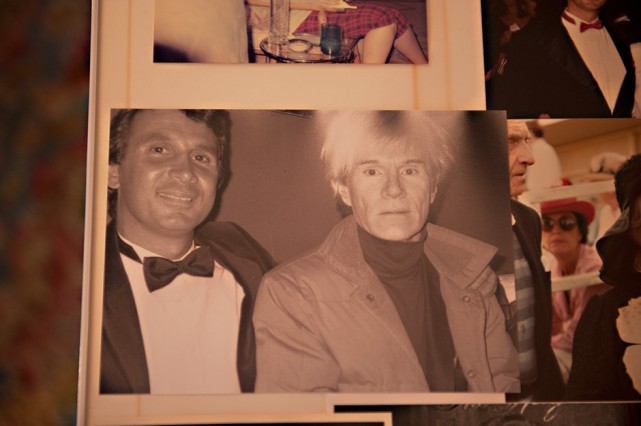
As we walked past more framed photos, Cacchione exclaimed, “Oh, and once I rescued someone who was drowning out in front of my house.” He pulled out the newspaper clipping that outlined the details, but before we could study the image of him aboard his jet ski pulling a woman from the water, he stood up and was on to the next item.
The walls displayed a large Western art collection of Native Americans, so naturally we questioned his interest. “Those paintings are of me,” he explained. “I model as a Native American for artists. I am on the covers of 34 books, and I’m the postage stamp for Custer’s Last Stand.” He pulled down some paperback novels and pointed to the cover art. Sure enough, his face was easily recognizable, framed by large, feathered headdresses.
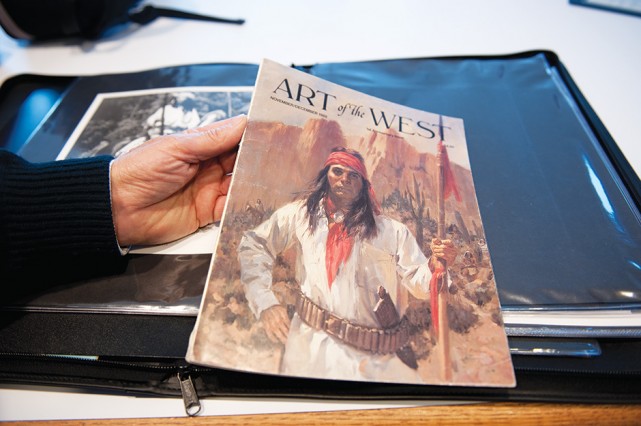
By now, the interview had become comedic, with anecdote after anecdote that would have been almost impossible to believe, were it not for the all proof that surrounded us.
Other shelves were lined with awards. Bob especially enjoyed telling stories that focus on the extensive reach of the IHSA. As he picked up a gleaming glass trophy, for example, he recalled that on his way home from receiving the United States Hunter Jumper Association (USHJA) President’s Award, he was stopped by airport security for the heavy lead-glass crystal in his carry-on bag. As he was pulled aside and patted down, a TSA agent read the award and said “Are you Bob Cacchione? I rode in the IHSA!” Cacchione was quickly let through.
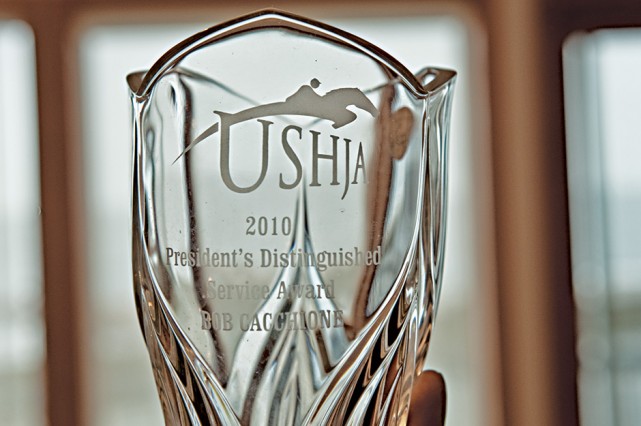
Bob mentions several awards and trophies in the course of his stories, further proof of his wide impact on the horse industry. The list includes the 2011 Equine Industry Vision Award, The EQUUS Foundation Humanitarian Award presented by The United States Equestrian Federation (USEF) and an honorary degree from Centenary College. “To be acknowledged for what I have tried to do for the youth of the equestrian world is incredibly meaningful,” he says.
Finally we asked what will happen when he eventually steps down from the IHSA. Bob was actually hesitant. “Well, things will change, for sure,” he said. He has some thoughts of successors, but he is realistic. “The IHSA is my love,” he said, “but it’s not a job; it doesn’t pay. I travel to many shows every year. I know I put more time into it than most people ever could.”
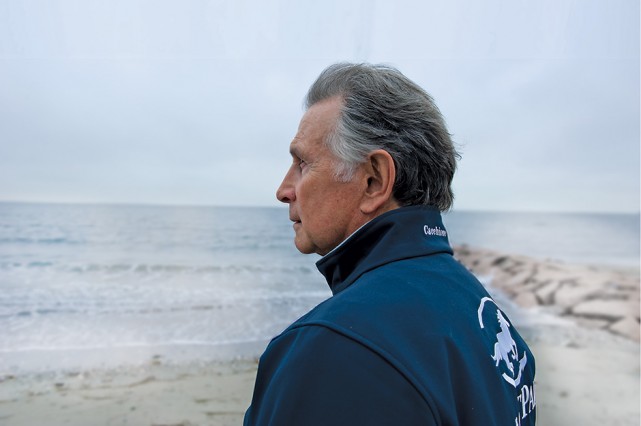
But the momentum behind the IHSA is here to stay. There are now hundreds of dedicated people who have helped college riding to grow and evolve, to include dressage, eventing, Western, and different leagues of competition from high school and up. “I never dreamed it would get this big,” he added. And it wouldn’t have, without Bob Cacchione.
